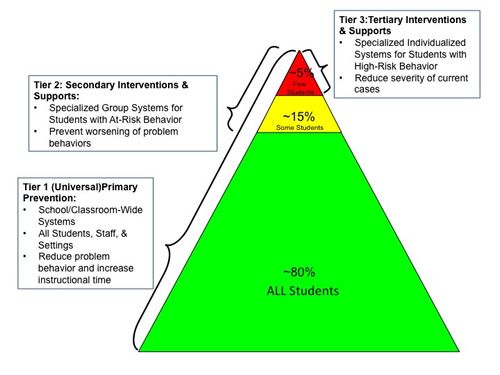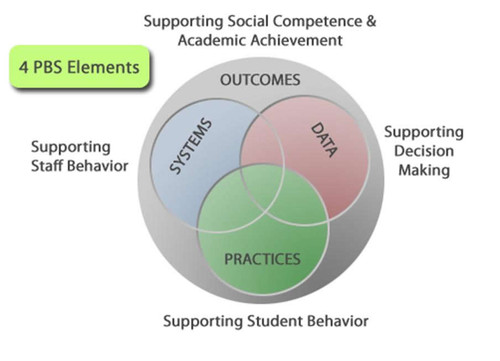
The goal of PBIS is to promote and teach appropriate pro-social skills and behaviors to maximize academic success for all students.
PBIS is an acronym for Positive Behavior and Intervention Supports. It is a school-wide integration of:
Positive behavioral support is an approach to enhance the capacity of schools, families, and communities. PBIS improves the link between practices and the environments in which teaching and learning occurs. Attention is focused on creating and sustaining primary (school-wide), secondary (classroom), and tertiary (individual) systems of support that provide positive results (personal, academic, health, social, family, work, recreation) for all children and youth by making desired behavior more functional, and problem behaviors less effective.
PBIS offers three tiers of behavioral supports to students. In the first tier, behavioral expectations are established and taught to all students. In the second tier, students needing additional support are offered group level interventions. Students needing significant support for behavioral challenges are provided evidence-based interventions tailored specifically to their needs in the third tier.

In the past, school-wide discipline has focused mainly on reacting to the specific student misbehavior by implementing punishment-based strategies including reprimands, loss of privileges, office referrals, suspensions, and expulsions. Research has shown that the implementation of punishment, especially when it is used inconsistently and in the absence of other positive strategies, is ineffective. Teaching, modeling, and reinforcing positive social behavior is an important step of a student’s educational experience. Teaching behavioral expectations and rewarding students for following them is a much more positive approach than waiting for misbehavior to occur before responding. The purpose of a school-wide PBIS is to establish a climate in which appropriate behavior is the norm.

Systems
Written policies, procedures, and expectations are some of the systems put in place by schools implementing PBIS. These systems help maintain a consistent approach to behavior.
Data
The data collected helps school teams make informed decisions about managing behavior and measuring outcomes. The data is also used to find the right mix of practices and systems for each school.
Practices
Classroom lessons teaching desirable behavior help students to understand what is expected of them. Likewise, educators follow a set of ‘best-practices’ that have been identified for their school. These practices keep both students and staff moving forward with PBIS.
Outcomes
The results of PBIS can be measured by both academic and behavioral changes in students. These outcomes are measured using the PBIS data collected and academic achievement data.
Success of PBIS = Increased Academic Time